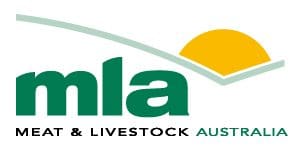 MEAT & Livestock Australia has assured consumers the Stage Four COVID-19 lockdown processor workforce reductions in Victoria are not anticipated to create domestic product shortages.
MEAT & Livestock Australia has assured consumers the Stage Four COVID-19 lockdown processor workforce reductions in Victoria are not anticipated to create domestic product shortages.
Under the lockdown rules, processors’ workforce capacity in Victoria will generally be scaled back by about 33 percent for six weeks from midnight Friday.
MLA’s National Livestock Reporting Service senior market analyst Adam Cheetham said the changes will create logistical pressures across the supply chain, in particular for sheep meat, given Victoria is the largest lamb processing state.
But he said it is not anticipated that the restrictions will create a shortage of product for domestic consumers, with ‘panic buying’ the main contributor to the sparse product on retail shelves in recent days.
But Mr Cheetham said as the sheep industry emerges from its seasonal low and the flush of new season lambs enter the market, available processing capacity will come into greater focus.
“Any extension of the stage 4 restrictions could create unwanted market pressures across the entire supply chain.”
However, he said despite the logistical challenges and cost burden associated with the restrictions for Victorian processors, any reduction in throughput in the next six weeks will still be sufficient to meet the demands of domestic consumers.
Mr Cheetham said the restrictions are designed to contain instances of COVID-19 in the workforce and will serve for the greater good if entire plant shutdowns can be avoided, as comparable to production declines witnessed in the United States in April.
“Australian processing facilities already comply with the most stringent health and safety measures, evidenced by globally renowned supply chain integrity systems.”
Processors may increase kill days and shifts
Mr Cheetham said the restrictions will see processing plants in Victoria required to cut workforce capacity.
“To adhere to the changes, processors may look to increase the number of processing days or extend working hours, as many plants are currently not operating at full capacity due to limited livestock availability on the back of two years of elevated drought-driven turn-off.
“Another factor limiting turn-off in Victoria is that sheep and lamb slaughter are seasonally lower during the winter months and processors typically take the opportunity to run maintenance during this period,” he said.
“In fact, before the announcement, Victorian cattle, sheep and lamb turnoff for the week ending 31 July were back 40 percent, 68pc and 46pc, respectively, compared to the highest weekly throughput over the last five years.”
Current slaughter levels are reduced
Eastern states lamb slaughter was reported at 285,700 head for the week ending 31 July, up 15pc on the same week last year, Mr Cheetham said.
“This was driven by New South Wales, which lifted 25pc on year-ago levels to 114,000 head, as early new season lambs started to enter the market.
“Demand for lighter lambs is exceeding heavier categories currently, as export processors look to avoid being left with surplus product.”
Mr Cheetham said while sheep slaughter moved to the highest level since April, at 66,000 head, it was reported as 30pc below year-ago levels.
“Declines across both New South Wales and Victoria as producers look to rebuild flock numbers reflect the limited availability of sheep, back 36pc and 31pc, respectively, compared to year-ago levels”.
Opportunities for interstate processors
Mr Cheetham said the improvement in seasonal conditions across Australia’s east coast earlier this year unsurprisingly renewed producer confidence, prompting a greater proportion of livestock to be retained on-farm for breeding purposes.
“Two consecutive years of heightened livestock turn-off has also contributed to lower throughput in 2020.
“Hence, processing capacity across all states is running below peak levels.”
Opportunities exist for interstate processors
Mr Cheetham said despite the logistical challenges faced with interstate travel, opportunities exist for neighbouring states to support production levels and utilise surplus capacity.
“This is the case in Queensland, with ample capacity available to process cattle and processing plants in New South Wales and South Australia able to ramp up production levels for sheep and lambs if required.
“Australia’s largest processing operators have a presence in multiple states and the movement of livestock interstate is common,” he said.
Domestic market has benefit from product redirection
Mr Cheetham said the domestic market for Australian red meat remains its largest single market.
“However, export markets combined account for approximately 70pc of total beef production and 75pc of total sheep meat production.
“The impact of COVID-19 has resulted in wide-scale shutdowns or restrictions in foodservice outlets in domestic and overseas markets, and the typical balance of demand for Australian product has shifted significantly, with processors increasingly working to redirect product to alternate channels,” he said.
“The domestic market has been a beneficiary of this shift, with a broader range of high-end products becoming available in butcher shops and on retail shelves, helping to supplement the increased prevalence of home dining in Australia.”
Source: MLA.

HAVE YOUR SAY